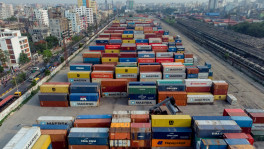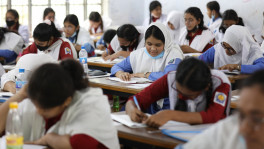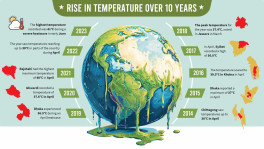Drilling for clean new energy
The leap in technological sophistication has allowed them to come so far, and give another try at the Larderello-Travale geothermal field

During this era of climate change and quick depletion of resources, humankind is looking for alternatives to non-renewable energy, or fossil fuels.
This is where the geothermal well 'Venelle-2' comes in. Within the scope of the DECRAMBLE (Drilling in dEep, Super-CRitical AMBients of continentaL Europe) project, the well was drilled in the geothermal area of Larderello in Italy, at the foothills of Tuscany's Apennine Mountains.
With the purpose of satiating the ever-increasing need for energy, Venelle-2 is focusing on extracting geothermal fluids – mineral rich water which exhibits both liquid and gaseous characteristics – by drilling thousands of meters into the earth's crust, said wired.com.
If Venelle-2 can tap into a supercritical fluid reserve and use it to turn a turbine on the surface, it would be one of the world's most energy-dense sources of renewable energy.
Researchers in an attempt to reach these supercritical fluids planned to drill down to the depth of 3000 metre, which will help with the extraction of the fluids.
However, reaching that goal is harder than it sounds because digging so deep into the ground can trigger seismic movements, and even a single mistake could result in a cataclysmic earthquake.
The University of Geneva (UNIGE), Switzerland, together with the University of Florence and the Italian National Research Council (CNR) researched seismic activity related to geothermal exploration in pursuit of supercritical fluids. And so far, there hasn't been evidence of anything alarming.
Then again, to ensure safety, Matteo Lupi, an author and an investigator of seismic activity, has set up eight seismic monitoring stations around the Venelle 2 well at the Larderello geothermal field. Throughout June 2017 and January 2018, regular readings were taken while drilling plummeted to a depth of about 2,750 metres.
Right now, the drilling has stopped close to the 'K horizon' – a complicated area that still escapes researchers understanding – located between the underlying hard rock layers and the lower flexible rock masses.
The temperature can reach up to 537 degrees Celsius at this depth, making Venelle-2 the hottest geothermal well to date, and the pressure being 300 times that at the surface, has caused severe damage to the drilling equipment.
Riccardo Minetto, a researcher in UNIGE's Department of Earth Sciences, explained that even though a lot is still unknown about "K horizon", the leap in the technological sophistication has allowed them to come so far, and give another try at the Larderello-Travale.
The challenges that come with harnessing geothermal energy makes this endeavour quite difficult anywhere the world. One of the biggest risks that looms over such an endeavour is the possibility of triggering a massive earthquake.
Even though researchers have presented sufficient evidence of their work and the risk involved, the 2nd strongest earthquake ever to affect South Korea occurred in 2019, and it originated from an experimental geothermal well.
Furthermore, if the earthquakes weren't scary enough, according to Susan Petty, president of Hot Rock Energy Research Organization and cofounder of the geothermal company Alta Rock Energy, the fluids themselves wreak havoc on boreholes by destroying their liners and concrete plugs.


 Keep updated, follow The Business Standard's Google news channel
Keep updated, follow The Business Standard's Google news channel
















